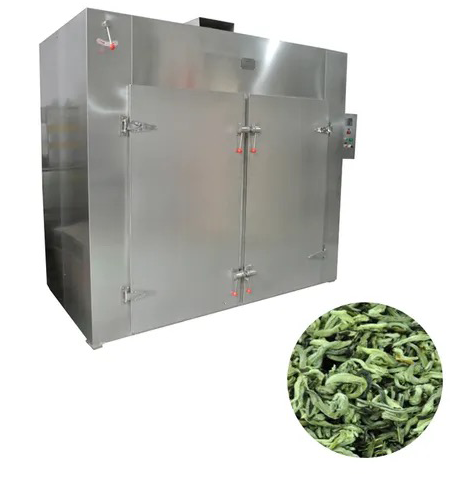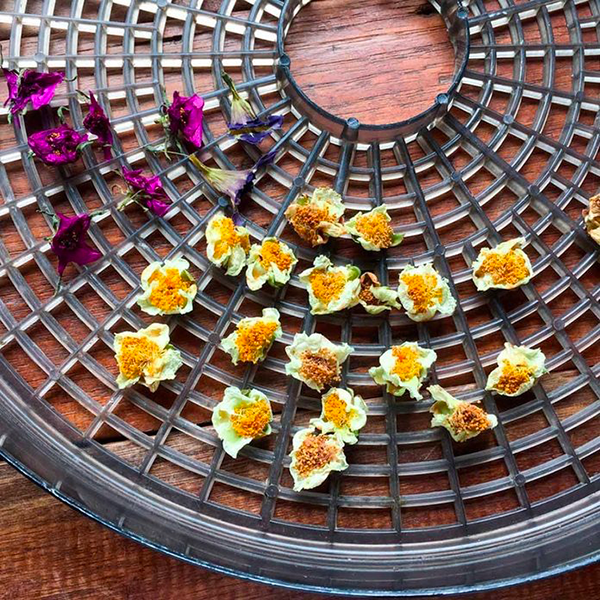
Content Menu
● Understanding Food Dehydration
● Benefits of Using a Food Dehydrator
● What Can You Make in a Food Dehydrator?
>> Fruits
>> Vegetables
>> Meats
>> Other Creative Uses
● Tips for Successful Dehydration
● Conclusion
● FAQ
>> 1. What types of foods should not be dehydrated?
>> 2. How long does it take to dehydrate fruits?
>> 3. Can I dehydrate cooked foods?
>> 4. How do I store dehydrated foods?
>> 5. Is it safe to dehydrate meat?
● Citations:
Food dehydrators are versatile kitchen appliances that allow you to preserve food by removing moisture, which helps extend shelf life and maintain nutritional value. This article explores a variety of foods you can make in a food dehydrator, along with tips, techniques, and recipes to inspire your culinary creativity.

Understanding Food Dehydration
Food dehydration is the process of removing moisture from food to prevent spoilage. By lowering the water content, you inhibit the growth of bacteria, yeast, and molds that cause food to decay. Dehydrators operate by circulating warm air at controlled temperatures, typically between 40°C to 75°C (104°F to 167°F), ensuring that nutrients are preserved while moisture is eliminated.
Benefits of Using a Food Dehydrator
- Extended Shelf Life: Dehydrated foods can last for months or even years when stored properly.
- Nutritional Retention: Dehydrating retains most of the vitamins and minerals found in fresh foods.
- Healthy Snacks: You can create nutritious snacks without preservatives or added sugars.
- Cost-Effective: Save money by preserving seasonal fruits and vegetables or using leftovers.
- Versatility: Dehydrators can be used for fruits, vegetables, meats, herbs, and even yogurt.
What Can You Make in a Food Dehydrator?
Here's a detailed list of items you can prepare using your food dehydrator:
Fruits
1. Banana Chips: Slice bananas thinly and dehydrate them for a crunchy snack.
2. Apple Chips: Core and slice apples, sprinkle with cinnamon if desired, and dehydrate until crisp.
3. Dried Berries: Strawberries, blueberries, and raspberries can be dehydrated for use in cereals or trail mixes.
4. Citrus Slices: Dehydrate oranges or lemons for garnishes or flavoring beverages.
5. Fruit Leather: Blend fruit purees with a bit of sweetener and dehydrate to create chewy fruit snacks.
6. Dried Pineapple: Cut fresh pineapple into rings or chunks and dehydrate for a tropical treat.
7. Dried Mango: Slice mangoes thinly for a sweet and chewy snack that's great for on-the-go.
Vegetables
1. Vegetable Chips: Kale, sweet potatoes, and zucchini can be sliced thinly and seasoned before dehydration.
2. Dried Peppers: Bell peppers or spicy varieties can be dehydrated for later use in cooking or as seasonings.
3. Dehydrated Onions and Garlic: Slice onions and garlic to make powders for seasoning.
4. Carrots and Peas: Steam before dehydrating to preserve color and flavor.
5. Herbs: Basil, thyme, rosemary, and other herbs can be dried for long-term storage.
6. Tomato Powder: Dehydrate tomatoes until completely dry and then grind them into powder for seasoning soups and sauces.
7. Mushrooms: Slice mushrooms thinly and dehydrate them; they can add umami flavor to various dishes once rehydrated.
Meats
1. Jerky: Marinate lean cuts of beef or turkey and dehydrate them for homemade jerky.
2. Chicken Jerky: Similar to beef jerky but requires careful marination to ensure flavor.
3. Fish Jerky: Salmon or tuna can also be dehydrated for a protein-rich snack.
4. Ground Beef Jerky: Use ground beef mixed with spices to create jerky using a jerky cannon for easy shaping.
5. Dehydrated Eggs: Scramble eggs lightly before dehydrating to create a lightweight source of protein perfect for camping trips.

Other Creative Uses
1. Granola: Make your own granola by mixing oats with nuts and honey before dehydrating.
2. Yogurt: Surprisingly, you can make yogurt in a dehydrator by maintaining a warm environment for fermentation.
3. Dehydrated Soups: Blend soups into a paste and dehydrate them into chips or powders for easy rehydration later.
4. Cheese Powder: Dehydrate cheese until crumbly to create powder for seasoning dishes.
5. Butter Powder: Dehydrate melted butter to create a versatile ingredient for baking.
6. Potpourri Ingredients: Dry flowers and herbs to create your own potpourri blends at home, adding delightful scents to your living space.
7. Homemade Trail Mix Ingredients: Combine various dried fruits, nuts, seeds, and even chocolate pieces to create custom trail mixes perfect for hiking or snacking on the go.
Tips for Successful Dehydration
- Uniform Slicing: Ensure all pieces are cut evenly to promote uniform drying.
- Avoid Overloading Trays: Spread food in a single layer without overcrowding the trays to facilitate airflow.
- Use Lemon Juice: Soak fruits like apples in lemon juice to prevent browning during dehydration.
- Rotate Trays Regularly: For even drying, rotate trays every few hours if your dehydrator does not have an automatic rotation feature.
- Check Moisture Levels: Ensure food is completely dry before storing it in airtight containers to avoid mold growth.
- Storage Conditions Matter: Store dehydrated foods in cool, dark places in airtight containers to maximize shelf life; vacuum sealing is recommended for long-term storage.
- Experiment with Flavors: Don't hesitate to try different seasonings or marinades on meats or vegetables before dehydrating them; this enhances flavor significantly.
- Monitor Temperature Settings Carefully: Different foods require different temperatures; fruits generally do well at higher temperatures while herbs need lower settings.
Conclusion
A food dehydrator opens up a world of possibilities for preserving food while enhancing flavors and textures. From healthy snacks like fruit chips to savory options like jerky, the versatility of this appliance makes it an essential tool in any kitchen. By experimenting with various ingredients and techniques, you can create delicious treats that suit your taste preferences while minimizing waste. The ability to control ingredients also means healthier options compared to store-bought snacks filled with preservatives or added sugars.
In addition, the process of dehydration is not only practical but also sustainable—reducing food waste by utilizing surplus produce that might otherwise spoil. Whether you're preparing meals ahead of time or creating snacks for outdoor adventures, mastering the art of dehydration allows you to enjoy your favorite foods year-round while saving money in the process.

FAQ
1. What types of foods should not be dehydrated?
Certain foods like high-fat items (e.g., avocados) or those with high water content (e.g., cucumbers) do not dehydrate well due to their tendency to spoil quickly after drying.
2. How long does it take to dehydrate fruits?
Dehydration times vary based on the type of fruit and thickness of slices but generally range from 6 to 12 hours at 57°C (135°F).
3. Can I dehydrate cooked foods?
Yes! You can dehydrate cooked foods like stews or casseroles; just ensure they are blended into a uniform consistency before spreading on trays.
4. How do I store dehydrated foods?
Store dehydrated foods in airtight containers in a cool, dark place. Vacuum sealing can extend shelf life further.
5. Is it safe to dehydrate meat?
Yes, but it's crucial to marinate it properly and ensure it reaches safe internal temperatures during the dehydration process to prevent foodborne illnesses.
Citations:
[1] https://www.commercialdehydrators.com.au/dehydrating-recipes-filters
[2] https://homesteadingfamily.com/preservation-101-intro-to-dehydrating-food/
[3] https://etsolutions.in/10-amazing-benefits-of-electrical-food-dehydrator-machines/
[4] https://www.youtube.com/watch?v=rXNIHzcE8F0
[5] https://www.mitchellcooper.co.uk/what-is-a-dehydrator-commercial-buying-guide
[6] https://www.webmd.com/diet/dehydrating-food-good-for-you
[7] https://eatsleepwild.com/homemade-dehydrated-backpacking-meals/
[8] https://vacuumsealersunlimited.com/how-to-use-a-food-dehydrator/
[9] https://www.bestbuy.com/discover-learn/10-reasons-to-buy-a-food-dehydrator/pcmcat1634332391134
[10] https://brodandtaylor.com/pages/dehydrating











